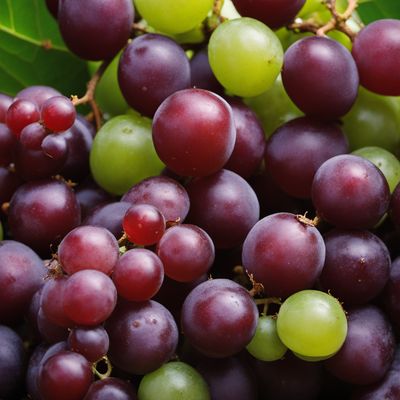
Ingredient
Santols
The Tropical Delight: Exploring the Exotic Santols
Santols are round or oval-shaped fruits with a thick, fibrous rind that is typically yellow when ripe. The flesh of santols is juicy and translucent, with a sweet and tangy flavor reminiscent of a blend between citrus fruits and peaches. The texture can vary from firm to slightly fibrous, and the fruit contains several large seeds that are typically removed before consumption. Santols are often enjoyed fresh, but they can also be used in jams, jellies, or desserts.
Origins and history
Santols are native to Southeast Asia, particularly the Philippines, where they are highly regarded as a tropical delicacy. They are also cultivated in other tropical regions, including India, Thailand, and Indonesia. In the Philippines, santols are often associated with summer and are commonly consumed during the hot months. The fruit holds cultural significance and is celebrated in festivals and traditional dishes.
Nutritional information
Santols are a good source of vitamin C, providing a significant amount of this essential nutrient. They also contain dietary fiber, which aids in digestion, and various antioxidants that contribute to overall health and well-being. Additionally, santols are relatively low in calories, making them a guilt-free indulgence.
Allergens
There are no known allergens associated with santols, making them a safe choice for most individuals. However, as with any fruit, some people may have individual sensitivities or allergies, so it is always advisable to consume santols in moderation and observe any potential adverse reactions.
How to select
When selecting santols, look for fruits that are firm and heavy for their size, as this indicates ripeness. The rind should be vibrant yellow and free from blemishes or soft spots. Avoid fruits with wrinkled or shriveled skin, as this may indicate overripeness. The scent of the fruit should be fragrant and sweet. If possible, choose locally grown santols to support local farmers and ensure freshness.
Storage recommendations
To maintain the freshness of santols, store them at room temperature until ripe. Once ripe, they can be stored in the refrigerator for a few days to prolong their shelf life. It is best to consume santols as soon as possible after ripening to enjoy their optimal flavor and texture.
How to produce
Santols can be grown in tropical regions with warm climates. They require well-drained soil and regular watering to thrive. The trees can be propagated from seeds or through grafting. However, due to their specific requirements and long maturation period, santols are not commonly grown by amateur gardeners.
Preparation tips
To prepare santols, start by cutting off the top and bottom of the fruit. Score the rind along the length of the fruit and carefully peel it away. Remove the seeds from the flesh and discard them. The flesh can be eaten fresh, added to fruit salads, or used in various culinary creations such as jams, jellies, or desserts. Santols can also be juiced or blended into refreshing beverages.
Culinary uses
Santols are commonly used in Southeast Asian cuisines, particularly in the Philippines, where they are used in traditional dishes such as sinigang (a sour soup) or as a topping for halo-halo (a popular Filipino dessert). The fruit's sweet and tangy flavor pairs well with both savory and sweet dishes, making it a versatile ingredient in various recipes.
Availability
Santols are primarily cultivated in Southeast Asian countries, including the Philippines, India, Thailand, and Indonesia. They are also found in other tropical regions with similar climates. Santols are not widely available in non-tropical regions, but they can sometimes be found in specialty Asian markets or imported fruit sections of supermarkets.
More ingredients from this category » Browse all

Purple mombins
The Vibrant Delight: Exploring the World of Purple Mombins

Malay pommarosas
The Exotic Delight: Malay Pommarosas - A Tropical Twist for Your Taste Buds

Babacos
Exotic Delight: Babacos

Indian jujubes
The Sweet and Tangy Jewel

Jaboticabas
The Exotic Jewel of the Tropics: Exploring the Enchanting World of Jaboticabas

Maprangs
The Exotic Tanginess of Maprangs

Pommarosas
The Vibrant Pommarosas: A Burst of Tropical Flavor

Aonlas
The Tangy Delight: Exploring the Unique Flavors of Aonlas

Natal plums
The Exotic Gems: Natal Plums

Carambolas
The Star of Tropical Delights: Carambolas Unveiled

Ambarellas
The Tropical Delight

Nonis
The Exotic Powerhouse